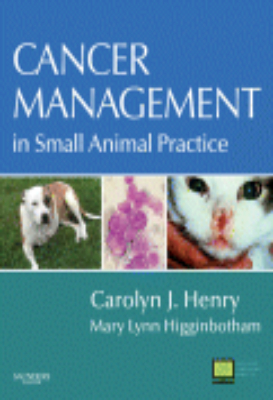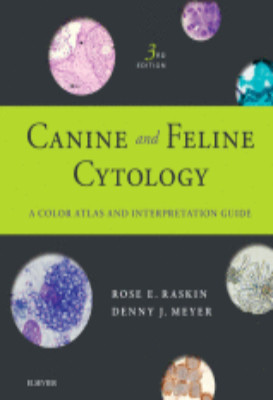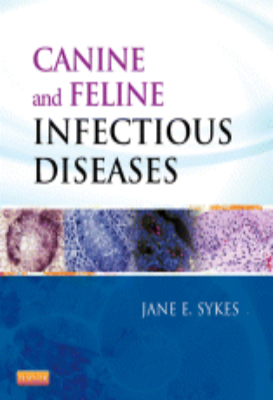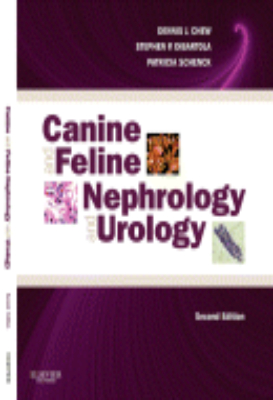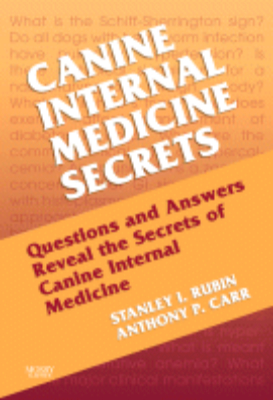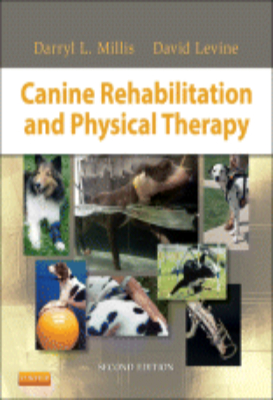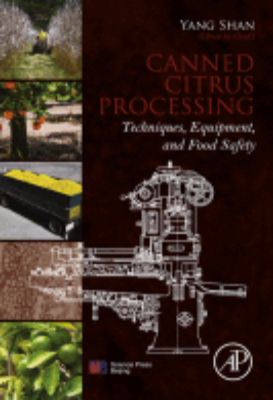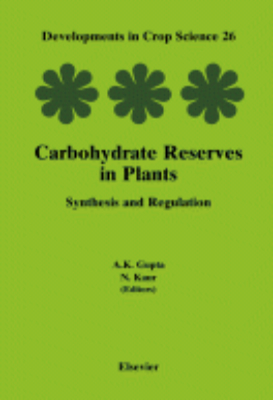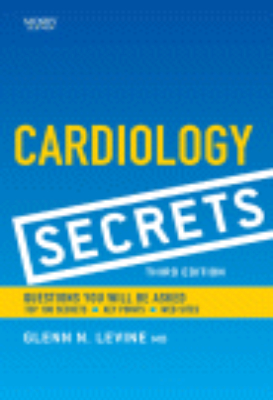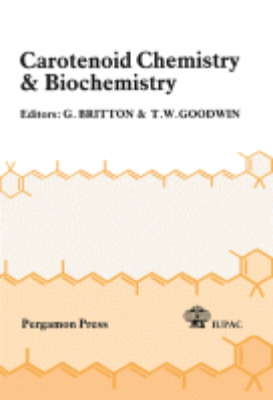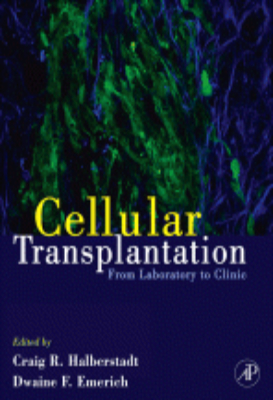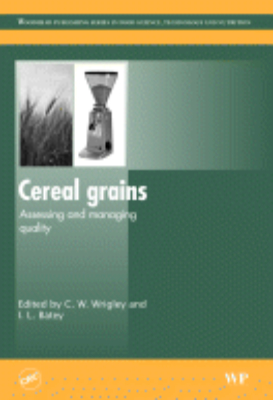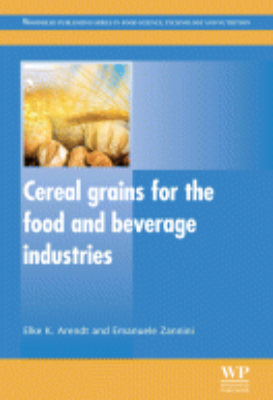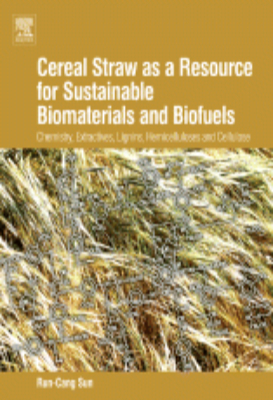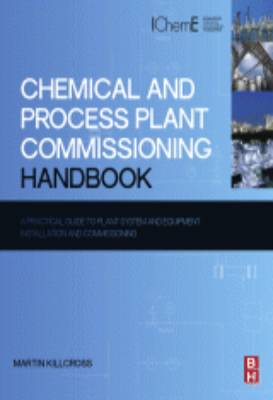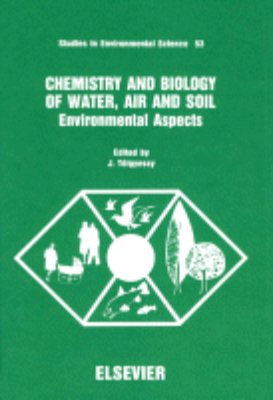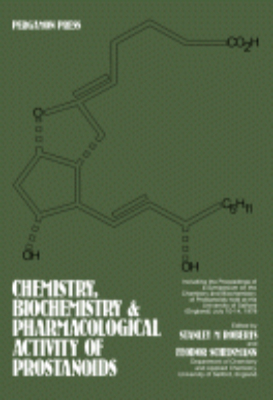ebooks
Brinker Piermattei and Flo’s Handbook of Small Animal Orthopedics and Fracture Repair
"Stay ahead of the rising demand for orthopedic surgery in veterinary practice with the most trusted handbook for small animal orthopedics. Brinker, Piermattei, and Flos Handbook of Small Animal Orthopedics and Fracture Repair, 5th Edition is the expert reference you need to successfully understand, diagnose, and treat the wide variety of conditions affecting the locomotor system in small animals. As with previous editions, this comprehensive handbook offers readers a clear and consistent description of the most common orthopedic conditions along with the pathology, diagnostic work-up, surgical indications and planning, surgical approach, surgical techniques, complications, and follow-up recommendations that accompany them. This new edition also includes the latest information on fractures, musculoskeletal diseases, and the advances in methods of fixation, lameness correction, and joint surgery. Not only will readers gain access to routinely used orthopedic treatments such as plating, wiring, and pinning techniques this handbook also discusses the more complex modalities like minimally invasive surgery, and angle stable fixation systems with the newest information on interlocking nail and locking plate technologies. With this unrivaled reference, youll have the expert guidance you need to successfully diagnose and treat nearly any musculoskeletal case you may encounter in daily practice. Key Features. Clear, concise coverage covers the pathology, diagnostic work-up, surgical indications and planning, surgical approach, surgical techniques, complications, and follow-up recommendations for the most common orthopedic conditions.. Step-by-step line drawings clearly illustrate different types of fractures and demonstrate the surgical procedures used to affect repairs detail that cant be conveyed in clinical photographs.. Anatomical organization provides quick access to information on both fractures and other conditions for each region of the body.. NEW! Advances in joint surgeries, specifically the knee, shoulder, and elbow, keep practitioners abreast of the latest technology and best practices.. NEW! Coverage of minimally invasive surgery has been added to the many chapters.. NEW! Advances in imaging (MRI, CT, and radiographs) are included to keep practitioners up to date on the latest technology.. Updates on new fixation technologies include angle stable interlocking nails and locking plate fracture fixation systems.. Updates on common surgeries include triple pelvic osteotomy and total hip replacement. NEW! High-definition clinical photographs have been added to give readers a closer view of various fractures and repair techniques."
C4 Plant Biology
Due to many issues related to long-term carbon dynamics, an improved understanding of the biology of C4 photosynthesis is required by more than the traditional audience of crop scientists, plant physiologists, and plant ecologists. This work synthesizes the latest developments in C4 biochemistry, physiology, systematics, and ecology. The book concludes with chapters discussing the role of C4 plants in the future development of the biosphere, particularly their interactive effects on soil, hydrological, and atmospheric processes.
Cancer Management in Small Animal Practice
"Cancer Management in Small Animal Practice provides you with all the tools needed to diagnose, stage, and manage the many different disease entities known as ""cancer."" This manual is designed to provide you with easy-to-access, clinically relevant details for complete care of the small animal cancer patient, while considering the needs, concerns, and capabilities of the client. It provides quick reference sections for information not included in current oncology texts, including drug interactions and resources for participation in clinical trials. All information is well referenced and the reference section on the accompanying website includes links to the original and related articles. Key Features. The latest information including diagnostic procedures, treatment modalities, and outcome predictions to help clients make the best decisions for their pets.. Expert contributors, renowned for clinical, as well as academic and research expertise, offer a wide breadth and depth of expertise. . Full-color format provides accurate visual depictions of specific diseases and procedures to enhance your diagnostic capabilities. . Key Points highlight critical information, enabling quick, easy access. . Systems approach to diagnosis and management offers logical, systematic, head-to-tail procedure for accurate diagnosis, treatment, and prognosis. . Extensive discussions of supportive care limit adverse events and increase patient survival and puts emergency information at the practitioners fingertips. . Suggested readings highlight the latest information for further investigation and research. . Comprehensive drug safety guidelines thoroughly discuss all information required to safely handle and administer cancer drugs. . Helpful drug formularies offer available formulations, recommended dosages, toxicities, and relative costs. . Chapter on how to access clinical trials provides helpful information and hope for patients and their caregivers."
Canine and Feline Cytology: 2010
Master the art and science of specimen collection, preparation, and evaluation with Canine & Feline Cytology: A Color Atlas and Interpretation Guide, Second Edition. This easy-to-use guide covers all body systems and fluids including a special chapter on acquisition and management of cytology specimens. Hundreds of vivid color images of normal tissue alongside abnormal tissue images plus concise summaries of individual lesions and guidelines for interpretation - will enhance your ability to confidently face any diagnostic challenge.
Canine and Feline Endocrinology
No other title offers such dedication to the depth, experience, and focus of endocrinology as Canine and Feline Endocrinology, 4th Edition. Comprehensive coverage includes virtually every common and uncommon condition in endocrinology, plus the most updated information on nutrition, geriatric care, pathophysiology, testing procedures, and cost-effective and expedient diagnostic protocols. With its logical, step-by-step guidance for decision making, diagnosis, and prescribing, you will be well-equipped to care for the wide spectrum of endocrine and metabolic disorders in dogs and cats.
Canine and Feline Gastroenterology
A comprehensive reference standard for the discipline, Canine and Feline Gastroenterology covers the biology, pathobiology, and diagnosis and treatment of diseases of the gastrointestinal, pancreatic, and hepatobiliary systems. An international team of experts, including 85 authors from 17 different countries, led by Robert Washabau and Michael Day, covers everything from minor problems such as adverse food reactions to debilitating inflammatory, infectious, metabolic, and neoplastic diseases of the digestive system. This authoritative text utilizes an evidence-based approach to reflect the latest science and research, complemented by principles of problem solving, algorithms to improve clinical diagnoses, and extensive full-color illustrations. For generalists and specialists alike, this gastroenterology reference should be part of every serious practitioner's professional library.
Canine and Feline Infectious Diseases
Canine and Feline Infectious Diseases is a practical, up-to-date resource covering the most important and cutting-edge advances in the field. Presented by a seasoned educator in a concise, highly visual format, this innovative guide keeps you current with the latest advances in this ever-changing field. 80 case studies illustrate the clinical relevance of the major infectious disease chapters.
Canine and Feline Nephrology and Urology
The prevalence of urinary tract diseases and disorders in small animal practice is higher than ever. The 2nd edition of Canine and Feline Nephrology and Urology makes it easy to find the information you need to accurately diagnose and manage diseases and disorders of the urinary tract in dogs and cats. Its concise outline format features practical clinical content, line drawings that clearly illustrate the initiation and progression of disease, photographs that demonstrate the clinical appearance of various lesions, and tables and boxes that offer essential information at a glance. Expert authors Dennis J. Chew, Stephen P. DiBartola, and Patricia Schenck keep you current with revised and brand-new content based upon the latest studies and evidence-based medicine, helping you prevent and most effectively manage kidney, bladder, and related conditions.
Canine and Feline Nutrition
How well can you answer pet owners' questions about proper diet and feeding Canine and Feline Nutrition, 3rd Edition describes the role of nutrition and its effects upon health and wellness and the dietary management of various disorders of dogs and cats. By using the book's cutting-edge research and clinical nutrition information, you'll be able to make recommendations of appropriate pet food and proper feeding guidelines. Pet nutrition experts Linda P. Case, MS, Leighann Daristotle, DVM, PhD, Michael G. Hayek, PhD, and Melody Foess Raasch, DVM, provide complete, head-to-tail coverage and a broad scope of knowledge, so you can help dog and cat owners make sound nutrition and feeding choices to promote their pets' health to prolong their lives.
Canine Behavior
Canine Behavior: Insights and Answers, 2nd Edition offers cutting-edge information on the latest advances in the field of clinical canine behavior. It is intended to meet the needs of veterinarians, veterinary students and technicians as well as pet owners dealing with problem pets, pet care personnel who handle dogs in the course of their work, and dog lovers who are seeking understanding of the natural and aberrant behaviors of their canine companions. This new edition establishes a solid foundation for understanding innate, dog-to-dog social interactions, communication, and sensory awareness, so that we humans can learn how to meaningfully and effectively communicate with our best friends. The authors goals are to provide a clear understanding of normal behaviors and to provide the necessary tools to identify problem behaviors and their origins. Only then is it possible to successfully and humanely prevent, eradicate, or minimize unacceptable behaviors and build successful, lifelong relationships with our dogs.
Canine Internal Medicine Secrets
Part of the popular Secrets Series, this new text provides essential, practical information for reviewing canine internal medicine topics commonly encountered in clinical situations. Organized by disorder type, it features numerous photos, a popular question-and-answer format, and a detailed index that makes it easy to find information quickly. In 10 concise chapters, expert contributors pose key questions and provide authoritative answers addressing the situations that confront small animal veterinarians every day.
Canine Rehabilitation & Physical Therapy
Veterinarians, physical therapists and veterinary technicians are often required to collaborate closely in order to provide optimal evaluation and treatment of animal patients. This practical and unique text offers a basic understanding of physical therapy techniques and intervention for dogs. Providing crucial information on this developing area of veterinary medicine, it assists in providing faster and more complete recoveries from debilitating conditions.
Canine Rehabilitation and Physical Therapy
Bridging the gap between human physical therapy and veterinary medicine, Canine Rehabilitation and Physical Therapy, 2nd Edition provides vets, veterinary students, and human physical therapists with traditional and alternative physical therapy methods to effectively evaluate and treat dogs with various debilitating conditions. Coverage includes treatment protocols for many types of cutaneous, neurologic, and musculoskeletal injuries to facilitate a faster and more complete recovery. "Overall, this book is an extensive text for anyone interested in pursuing canine rehabilitation and physical therapy" Reviewed by: Helen Davies, University of Melbourne on behalf of Australian Veterinary Journal, March 2015
Canned Citrus Processing
Citrus is one of the most popular fruits around the world, and can be successfully cultivated in more than 140 countries. Producing 75% of citrus consumed in the global market, China has become the new Kingdom of Canned Citrus. Canned Citrus Processing: Techniques, Equipment, and Food Safety comprehensively presents the technical and development trends of the canned citrus industry. This book provides solutions to typical problems of canned citrus manufacturing and processing; presents an overview of the canned citrus industry, introduces canned citrus processing machinery and equipment, and discusses the processing quality, safety control, and related standards.
Cannon’s Point Plantation 1794 – 1860
Cannon's Point Plantation, 1794 1860: Living Conditions and Status Patterns in the Old South presents the results of historical archaeological investigations at Cannon's Point, an antebellum sea-island cotton plantation off the Georgia coast. This book compares investigations of archaeological remains at sites once occupied by slaves, overseers, and planterspeople who differed in racial, social, and economic status. This text not only examines the material living conditions of the Old South, but also observes a substantial example of status patterning in the archaeological record. This publication is valuable to archaeologists and historians concerned with the treatment and daily lives of slaves in the Old South.
Cardiology of the Horse
Cardiology of the Horse is a multi-author, contemporary reference on equine cardiology. The first section reviews the physiology, pathophysiology and pharmacology of the equine cardiovascular system. The second section describes diagnostic methods from basic to specialist examination skills and the third section addresses the investigation and management of common clinical problems using a problem-orientated approach. Suitable for students, general and specialist practitioners and teachers.
Cardiology Secrets
"Revised and updated, Cardiology Secrets, 3rd Edition has the answers. Comprehensive, yet easy to read, Dr. Levine presents all the latest advances in the diagnosis and treatment of heart conditions in this popular Secret Series volume. A two-color page layout, portable size, and a list of the Top 100 Secrets in cardiology help you better meet the challenges you face today. Youll find all the features you rely on from the Secrets Seriesa question-and-answer format, lists, mnemonics, tables and an informal tonethat make reference fast and easy. Plus, new imaging modalities and pharmacologic agents keep you on the cusp of the latest advances. Key Features. Expedites reference and review with a question-and-answer format, bulleted lists, mnemonics, and practical tips from the authors.. Covers the full range of essential topics, including general examination, diagnostic procedures, arrhythmias, symptoms and disease states, valvular heart disease, cardiovascular pharmacology, and other medical conditions with associated cardiac involvement.. Features a two-color page layout, ""Key Points"" boxes, and lists of useful web sites to enhance your reference power.. Presents a chapter containing ""Top 100 Secrets"", providing you with an overview of essential material for last-minute study or self-assessment.. Fits comfortably in the pocket of your lab coat so you have it conveniently on hand at all times.. Presents a new editor and a new contributor team who bring you fresh perspectives and the latest research in cardiology.. Discusses the latest imaging modalities and pharmacologic agents to keep you up to date.. Uses a new contemporary internal design that helps you navigate the text easier."
Carotenoid Chemistry and Biochemistry
Carotenoid Chemistry and Biochemistry covers the proceedings of the Sixth International Symposium on Carotenoids, held in Liverpool, United Kingdome on July 26-31, 1981. This symposium highlights the interest in biochemical and biological aspects of carotenes. This book is organized into 25 chapters including chapters on carotenoid chemistry, their structures, synthesis and physical methods, with emphasis on their stereochemistry. Other chapters deal with the chemistry of complexes between carotenoids or retinoids and protein, the novel blue carotenoproteins, and the visual pigments and the nutritionally important retinol-binding proteins. The discussions then shift to animal carotenoids, carotenoid metabolism and transformations, including interesting stereochemical findings. This book also reviews studies of carotenoids in photosynthesis, the industrial importance of carotenoids, medical aspects, particularly the use of carotenoids in treatment against skin photosensitivity and their possible role in protection against cancer. The remaining chapters examine the effects of chemicals on carotenoid biosynthesis and its relevance to herbicide design. This book will be of value to carotenoid scientists and researchers.
Cellular Transplantation
"There have been tremendous strides in cellular transplantation in recent years, leading to accepted practice for the treatment of certain diseases, and use for many others in trial phases. The long history of cellular transplantation, or the transfer of cells from one organism or region of the body to another, has been revolutionized by advances in stem cell research, as well as developments in gene therapy. Cellular Transplants: From Lab to Clinic provides a thorough foundation of the basic science underpinning this exciting field, expert overviews of the state-of-the-art, and detailed description of clinical success stories to date, as well as insights into the road ahead. As highlighted by this timely and authoritative survey, scale-up technologies and whole organ transplantation are among the hurdles representing the next frontier. The contents are organized into four main sections, with the first covering basic biology, including transplant immunology, the use of immunosuppressive drugs, stem cell biology, and the development of donor animals for transplantation. The next part looks at peripheral and reconstructive applications, followed by a section devoted to transplantation for diseases of the central nervous system. The last part presents efforts to address the key challenges ahead, such as identifying novel transplantable cells and integrating biomaterials and nanotechnology with cell matrices. Key Features. Provides detailed description of clinical trials in cell transplantation. Review of current therapeutic approaches. Coverage of the broad range of diseases addressed by cell therapeutics. Discussion of stem cell biology and its role in transplantation"
Cereal Grains
"Cereal grains are essential to our dietary needs, as well as for animal feeding and for industrial processing. Consumer needs can only be met by managing quality at all stages of the grain chain. Quality evaluation is also needed at each step for effective management. Cereal grains: assessing and managing quality provides a convenient and comprehensive overview of academic research and industry best practice in these areas. After an initial chapter introducing the themes of the book, further chapters in Part one review cereal grain morphology and composition and the diversity of uses of cereal grains. Chapters in Part two convey the characteristics and quality requirements of particular cereals, including wheat, rye, corn and rice. The use of analytical methods at different stages of the value-addition chain is the subject of Part three. The final section in the book reviews factors affecting grain quality such as breeding, storage and grain processing, and also possible future developments. With its expert team of editors and authors, Cereal grains: assessing and managing quality is a valuable reference for all those involved in the production and processing of cereal grains worldwide. Key Features. Reviews cereal grain morphology and composition and the diversity of the different uses of cereal grains. Examines the use of analytical methods at different stages of the value-addition chain. Reviews the factors affecting grain quality such as breeding, storage and grain processing, as well as possible future developments"
Cereal Grains for the Food and Beverage Industries
"Cereals are a staple of the human diet and have a significant effect on health. As a result, they are of major significance to the food industry. Cereal grains for the food and beverage industries provides a comprehensive overview of all of the important cereal and pseudo-cereal species, from their composition to their use in food products.The book reviews the major cereal species, starting with wheat and triticale before covering rye, barley and oats. It goes on to discuss other major species such as rice, maize, sorghum and millet, as well as pseudo-cereals such as buckwheat, quinoa and amaranth. Each chapter reviews grain structure, chemical composition (including carbohydrate and protein content), processing and applications in food and beverage products.Cereal grains for the food and beverage industries is an essential reference for academic researchers interested in the area of cereal grains and products. It is also an invaluable reference for professionals in the food and beverage industry working with cereal products, including ingredient manufacturers, food technologists, nutritionists, as well as policy-makers and health care professionals. Key Features. A comprehensive overview of all of the important cereal and pseudo-cereal species. Chapters review each of the following species: Wheat, Maize, Rice, Barley, Triticale, Rye, Oats, Sorghum, Millet, Teff, Buckwheat, Quinoa and Amaranth. Reviews grain structure, chemical composition, processing and applications in food and beverage products for each of the considered grains"
Cereal Straw as a Resource for Sustainable Biomaterials and Biofuels
"Materials from renewable resources are receiving increased attention, as leading industries and manufacturers attempt to replace declining petrochemical-based feedstocks with products derived from natural biomass, such as cereal straws. Cereal straws are expected to play an important role in the shift toward a sustainable economy, and a basic knowledge of the composition and structure of cereal straw is the key to using it wisely. Cereal Straw as a Resource for Sustainable Biomaterials and Biofuels: Chemistry, Extractives, Lignins, Hemicelluloses and Cellulose provides an introduction to straw chemistry. Topics discussed include the structure, ultrastructure, and chemical composition of straw; the structure and isolation of extractives from the straw; the three main components of straw: cellulose, hemicelluloses, and lignins; and chemical modifications of straw for industrial applications. This book will be helpful to scientists interested in the areas of natural resource management, environmental chemistry, plant chemistry, material science, polysaccharide chemistry, and lignin chemistry. It will also be of interest to academic and industrial scientists/researchers interested in novel applications of agricultural residues for industrial and/or recycling technologies. Key Features. Provides the basics of straw composition and the structure of its cell walls. Details the procedures required to fractionate straw components to produce chemical derivatives from straw cellulose, hemicelluloses, and lignins. Elucidates new techniques for the production of biodegradable materials for the energy sector, chemical industry, and pulp and paper business"
Chemical and Process Plant Commissioning Handbook
"The Chemical and Process Plant Commissioning Handbook, winner of the 2012 Basil Brennan Medal from the Institution of Chemical Engineers, is a guide to converting a newly constructed plant or equipment into a fully integrated and operational process unit. Good commissioning is based on a disciplined, systematic and proven methodology and approach that achieve results in the safest, most efficient, cost effective and timely manner. The book is supported by detailed, proven and effective commission templates, plus extensive commissioning scenarios that enable the reader to learn the context of good commissioning practice from an experienced commissioning manager. It focuses on the critical safety assessment and inspection regimes necessary to ensure that new plants are compliant with OSHA and environmental requirements. Martin Killcross has brought together the theory of textbooks and technical information obtained from sales literature, in order to provide engineers with what they need to know before initiating talks with vendors regarding equipment selection. Key Features. Unique information from a respected, global commissioning manager: delivers the know-how to succeed for anyone commissioning new plant or equipment. Comes with online commissioning process templates that make this title a working tool kit as well as a key reference. Extensive examples of successful commissioning processes with step-by-step guidance enable readers to understand the function and performance of the wide range of tasks required in the commissioning process"
Chemical Plant Taxonomy
Chemical Plant Taxonomy focuses on the classification of plants based on their chemical composition. Composed of contributions of authors, the text first considers the methods of plant taxonomy. Folk taxonomy; Linnaean and post-Linnaean taxonomy; Darwin and ""Evolutionary Taxonomy""; and the development of taxonomic practice are considered. The book continues with discussions on the theoretical and practical aspects of the ""species"" concepts and an outline of the history of chemical taxonomy. The selection also looks at the qualities of chemotaxonomy, the usefulness of chemistry in plant taxonomy, biosynthetic pathways, and the factors affecting the production of secondary plant products. The text discusses the distribution of alkanes. The isolation and characterization of alkanes; taxonomic applications of alkanes; biogenesis of alkanes; and fossil alkanes are discussed. The selection highlights the chemical taxonomy of acetylenic compounds, the distribution of fatty acids in plant lipids, distribution of aliphatic polyols, cyclitols, plant glycosides, and alkaloids. The text is a good source of information for readers wanting to study the taxonomy of chemical plants.
Chemistry Biochemistry and Pharmacological Activity of Prostanoids
Chemistry, Biochemistry, and Pharmacological Activity of Prostanoids contains the proceedings of a symposium on the Chemistry and Biochemistry of Prostanoids held at the University of Salford, England on July 10-14, 1978. Separating 29 papers of the symposium as chapters, this book begins with a description of prostanoids in health and disease and recent developments in the synthesis of antisecretory prostaglandins. Other topics discuss synthesis of some novel 11-deoxyprostaglandins; bicycles, tricycles and prostaglandin synthesis; chemical and biological studies on new prostanoids; and isolation and characterization of enzymes involved in prostaglandin biosynthesis. Structure activity relationships of prostaglandins and a biochemical background of caloric restriction therapy of obesity are also explained.
Chemistry of Plant Phosphorus Compounds
"Provides a high level reference source for scientists engaged in any aspect of plant research chemistry, biochemistry or physiology with primary focus on the chemistry of phosphorus-containing compounds that occur naturally in the plant kingdom, and specifically in the higher plants (Plantae). The book is comprehensive with respect to nomenclature, physical properties, and distribution worldwide. There are many tables of actual data on phosphorus compounds occurring in whole plants and parts of plants. The tables provide detailed data that is needed by the food industry, agriculture, etc as many of the phosphorus compounds are common to both plants and animals. Two appendices cover other aspects including changes in phosphorus-containing compounds during germination and their accumulation during growth and senescence. The final sections of the book comprise separate indexes of plants, compounds and authors. Key Features. Comprehensive examination of phosphorus compounds found in plants. Extensive tables listing types of compounds and their occurrence in plants including: Nomenclature; Occurrence; Physical Properties; Synthesis; Hydrolysis; Phosphorylation; Extraction; Separation and Analysis. Easy to use indexes of plants, compounds and authors"




